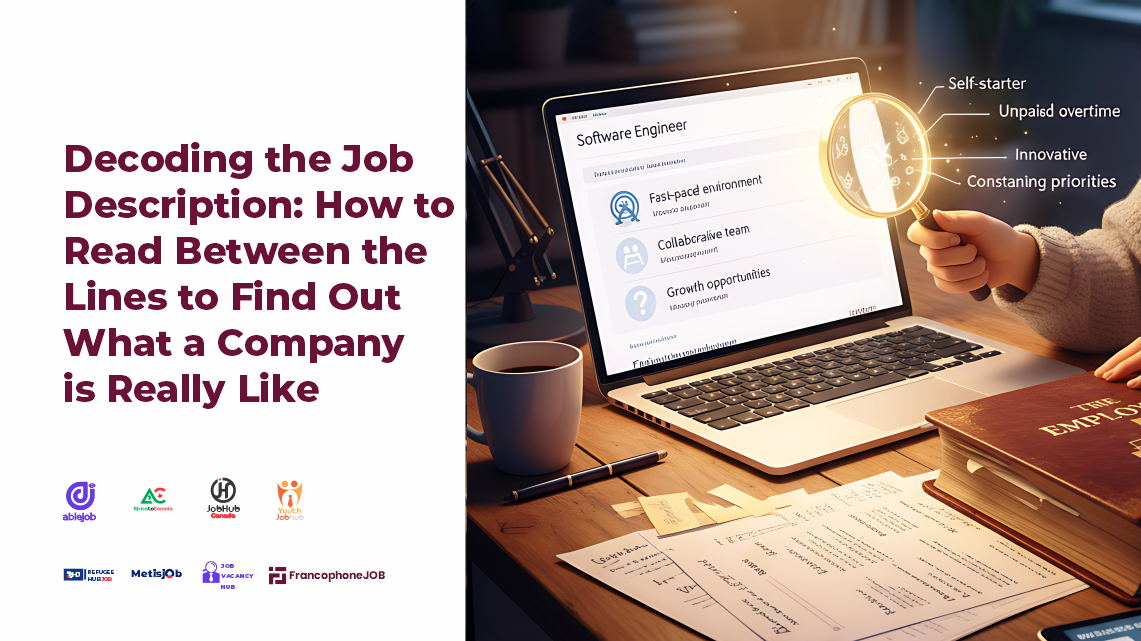October 23, 2025

A job description is more than just a list of responsibilities; it’s your first real glimpse into a company’s culture. Before you spend hours tailoring your resume and cover letter, it’s crucial to "read between the lines".
Employers use specific language to signal their expectations, values, and the true nature of their work environment. Learning to decode this language can save you from applying to a role that’s a poor fit and help you identify a company where you’ll truly thrive.
Here’s how to analyse a job description for the green flags that signal a great opportunity and the red flags that mean you should probably keep scrolling.
Green flags indicate a company that is transparent, organised, and values its employees.
Salary Range is Listed: This is the biggest green flag. It shows transparency and respect for your time. It proves the company isn't afraid to state what a role is worth and wants to start the conversation on an honest footing.
Clear, Realistic Responsibilities: The posting lists 5 to 7 specific, well defined responsibilities. You can clearly picture what the day to day work looks like. This signals a well thought out role and a manager who knows what they need.
Emphasis on Growth and Development: You see phrases like "professional development budget", "mentorship opportunities", or "clear paths for career progression". This means the company is willing to invest in your growth, not just use you for your current skills.
Specifics on Work Life Balance: Instead of vague promises, they list concrete benefits like "flexible start times", "remote work options", or "compressed work weeks". This shows that work life balance is an actual policy, not just a nice idea.
Inclusive Language: The description uses "you will" instead of "the ideal candidate must." It avoids biased language and focuses on what you’ll achieve. You might also see a clear, genuine commitment to diversity and inclusion.
Red flags can signal a chaotic environment, unrealistic expectations, or a high employee turnover rate.
Vague Job Title and Responsibilities: The title is ambiguous (e.g., "Ninja", "Rockstar", "Guru"), and the responsibilities are a laundry list of every possible task. This is a major sign of a disorganised role where you’ll likely be doing the work of three people.
Overused, Empty Buzzwords: Be wary of these common phrases and what they really mean:
"Fast-paced environment" often means chaotic, understaffed, and high stress, with tight deadlines and little support.
"Work hard, play hard" can imply long, demanding hours are the norm, with an expectation to socialise with colleagues after work.
"We’re like a family": This can be a warning sign of poor boundaries, low pay (in exchange for "belonging"), and an expectation of unwavering loyalty.
"Self-starter" or "works independently": Can be positive, but often means you will receive little to no training, guidance, or mentorship.
Unrealistic "Requirements": The posting asks for 5+ years of experience for an "entry-level" role or demands mastery of a dozen different complex software systems. This signals a company that doesn't understand the market or is trying to get senior-level work for junior-level pay.
"Salary is competitive": This is a red flag for the same reason a listed salary is a green flag. It shows a lack of transparency and forces you to guess. Often, it means the salary is, in fact, not competitive.
Typos and Sloppy Formatting: A job description full of spelling errors and bad formatting is unprofessional. If the company can't put in the effort to represent itself well, imagine the lack of care it puts into its internal processes or employee experience.
A job description is your first interview. By learning to decode it, you can stop wasting time on companies that aren't right for you and focus your energy on the ones that clearly signal a positive, supportive, and successful career.




